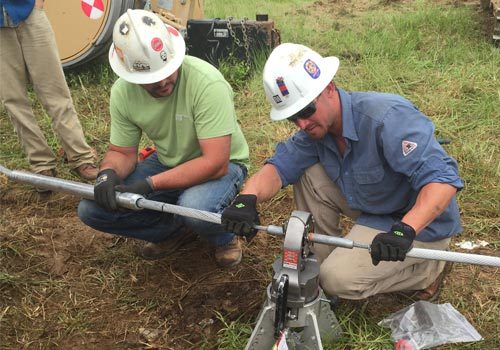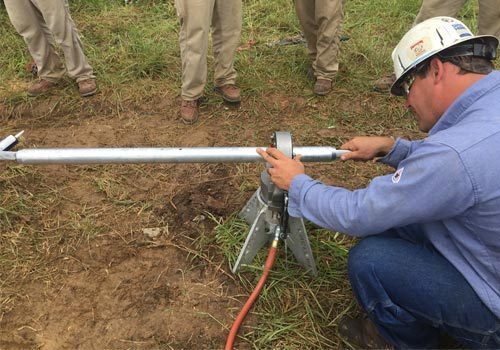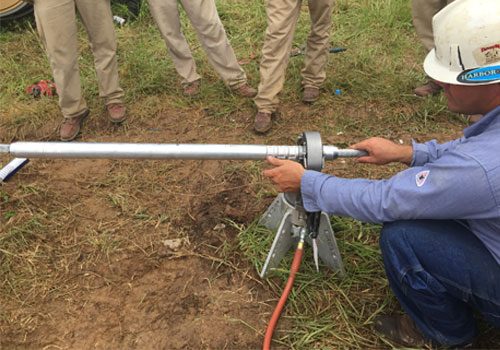
Aluminum Conductor Steel Supported (ACSS) cables are designed to be primarily supported by a steel core. This means it sags less at higher operating temperatures and has lower line losses versus other conductor types.
Why Choose DMC for ACSS?
Superior Design
In order to carry the higher currents and exceed standards, our ACSS 2-Stage connectors are larger and contain more aluminum than the competition. This difference is especially prominent versus some manufacturers that lump their ACSR & ACSS products together to reduce cost and inventory. DMC Power ACSS connectors are specially designed to operate at peak performance for the specific application for as long as possible, not a "one-size-fits-all" cost cutting measure.
Exceeds Conductor Requirements
Automatic splices are not recommended for use with ACSS conductors. DMC Power 2-Stage Compression meets all manufacturer requirements and ensures proper gripping of the steel core.
Fastest, Safest Installation Method
Birdcaging? Forget about it! Our 2-Stage connectors have been designed to meet all requirements of ACSS cables.
The First Stage of installation begins with our internal steel gripping core/eye loop being Swaged compressed directly onto the conductor’s steel core.
The Second Stage has the aluminum sleeve placed over the conductor and gripping core/eye loop. Starting from the top near the Eye Loop, the outer sleeve is Swaged down the barrel towards the open end
Top Quality Materials
| DMC Power | Competitor | |
| Aluminum Alloy | 1100 | 1100 |
| Conductivity (IACS %) | 57% | 57% |
| Manufacture | Drawn or Machined Drilled | Drawn |
Tested and Certified
RUNS COOLER, LONGER
During ANSI C119.4 type testing, DMC Power ACSS Deadends and Splices showed superior resistance stability on all samples through 500 thermal cycles at 250°C-285°C above room temperature. Additional extreme temperature cycling to 325°C was performed for 280 more cycles with all samples averaging 50% cooler than the control and the post-aging tensile load yielding 104% RBS.
THERMAL MECHANICAL ACSS TESTING
Our ACSS line of high temperature Deadends and Splices have been independently tested to the rigorous international standards of CIGRE TB 426. Accordingly, samples were subjected to 500 current cycles at 250°C with 25% RBS constant tension including 5 separate sustained holds at 70% RBS for 24 hours. All DMC Power connectors passed easily with the post-aging tensioned conductor breaking at a remarkable 103% RBS.
Swage Tooling
6 Dies Only!
As with our substation productions, DMC Power Swage Tools for Full Tension applications are lightweight, easy to operate and produce consistent, repeatable connections.
And unlike other installation methods, there are only 6 different dies that are possible! All ACSS 2-Stage connections can be made with as little as two Head assemblies (one for the inner core and one out sleeve). Each Head Assembly is easy to change - in fact, the only thing easier than changing Head Assemblies is installing the connector!




